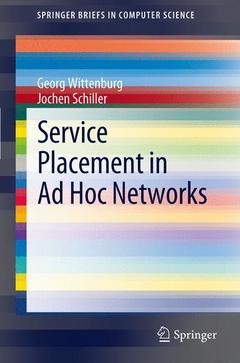Description
Service Placement in Ad Hoc Networks, 2012
SpringerBriefs in Computer Science Series
Authors: Wittenburg Georg, Schiller Jochen
Language: English
Approximative price 52.74 €
In Print (Delivery period: 15 days).
Add to cart116 p. · 15.5x23.5 cm · Paperback
Description
/li>Contents
/li>Comment
/li>
Introduction
Background
The SPi Service Placement Framework
SPi Service Placement Algorithms
Evaluation
Conclusion
Describes a SPi service placement framework as a novel approach to service placement in ad hoc networks
Proposes the Graph Cost/Single Instance and the Graph Cost/Multiple Instances placement algorithms
Examines the properties of this approach to service placement and compares it with other recent proposals
Includes supplementary material: sn.pub/extras




